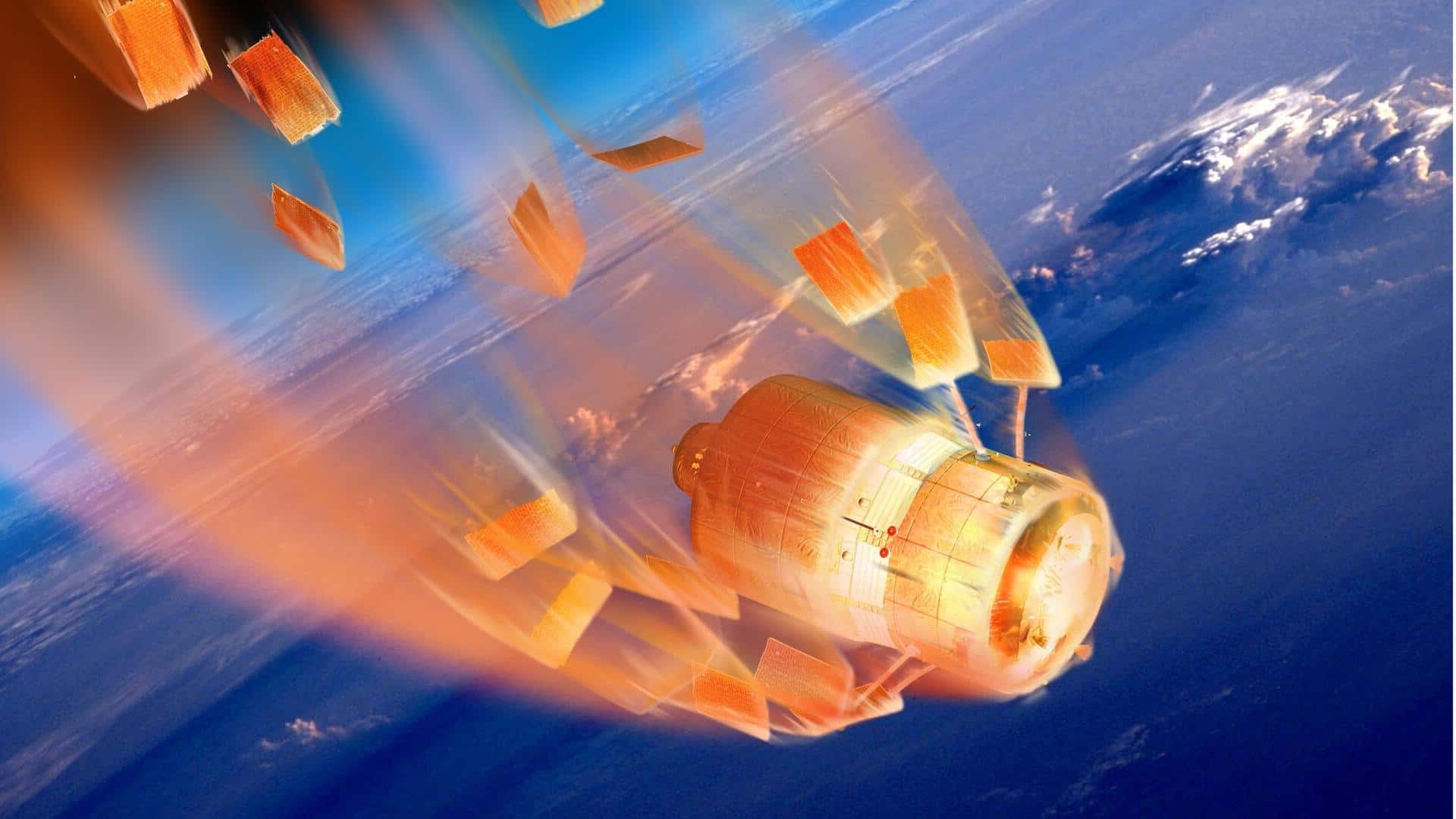
How NASA will bring back a defunct satellite to Earth
What's the story
A defunct NASA satellite, dubbed Reuven Ramaty High Energy Solar Spectroscopic Imager (RHESSI), will make its way to Earth soon. The 270kg spacecraft is expected to re-enter Earth's atmosphere at around 7:00am IST on April 20 plus or minus 16 hours, according to the space agency. The RHESSI mission probed the Sun for almost 16 years and was decommissioned in 2018.
Re-entry
The majority of the spacecraft is expected to burn up
The majority of the RHESSI spacecraft is expected to burn up as it makes its re-entry through Earth's atmosphere. Some components of the dead satellite are expected to survive reentry. However, there is no need to worry since it will not cause any harm. "The risk of harm coming to anyone on Earth is low; approximately 1 in 2,467," said NASA.
Mission
Why was the mission significant?
RHESSI observed solar flares and coronal mass ejections on the Sun from its position in the low-Earth orbit. Solar flares are intense bursts of radiation in the Sun's atmosphere. Events like solar flares and CMEs "release the energy equivalent of billions of megatons of TNT into the solar atmosphere within minutes." Such eruptions can impact Earth, which includes disrupting electrical systems.
Solar flares
RHESSI carried out investigations using a single science equipment
The RHESSI satellite was used to image high-energy electrons which carry a large portion of the energy released in solar flares. The mission carried out investigations using a single piece of science equipment, an imaging spectrometer, to record X-rays and gamma rays emitted by the Sun. Notably, prior to the RHESSI mission, no gamma-ray or high-energy X-ray images had been captured of solar flares.
Information
RHESSI recorded more than 100,000 X-ray events
"During its mission tenure, RHESSI recorded more than 100,000 X-ray events, allowing scientists to study the energetic particles in solar flares," said NASA. "The imager helped researchers determine the particles' frequency, location, and movement, which helped them understand where the particles were being accelerated."
Other discoveries
Why did the mission come to an end?
The RHESSI mission also made a couple of discoveries that were not related to solar flares. For instance, it showed that terrestrial gamma-ray flashes, also called dark lightning, are bursts of gamma rays released high in Earth's atmosphere over lightning storms, occur more frequently than previously thought. The mission was decommissioned, in 2018, due to communication issues with the spacecraft.